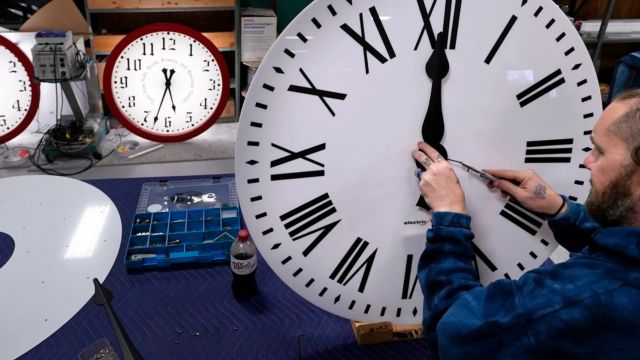In many parts of the United States, residents are required to adjust their clocks twice a year: once in the spring, when Daylight Saving Time (DTS) begins, and again in the fall, when it ends. Daylight Saving Time starts annually on the second Sunday in March and in 2024, this change took place on Sunday, March 10, at 2:00 a.m., when clocks were moved forward by one hour.
This marks the beginning of the Daylight Saving period. As the year progresses, the end of Daylight Saving Time approaches, signaling a return to Standard Time.
For 2024, the end of Daylight Saving Time is scheduled for November. Specifically, it will conclude on the first Sunday of the month, which falls on November 3, just in time for small children and adults alike to enjoy Halloween. At 2:00 a.m. on this date, clocks will be set back by one hour to revert to Standard Time.
This shift provides an extra hour of sleep for a night and effectively ends the DTS period until it begins again the following year.
In today’s world, this adjustment is often made automatically by most electronic devices, including smartphones, which are programmed to update the time at 2:00 a.m. without the need for manual intervention, so it is not as frustrating as it was in the past when all clocks needed to be adjusted, and alarms properly reset.

Looking ahead, the pattern of Daylight Saving Time will continue as usual. For instance, in 2025, DST will commence on Sunday, March 9, and will conclude on Sunday, November 2. These dates follow the established pattern of starting on the second Sunday in March and ending on the first Sunday in November each year.
Who participates in Daylight Saving Time?
A curious thing happens in the US when it comes to Daylight Saving Time, and that is that, unlike most countries, not all regions in the United States participate in Daylight Saving Time.
SEE MORE –
Carter Bank Denies ‘false And Misleading’ Claims In $226 Million Lawsuit Over Justice Debt Payments
While the majority of states adhere to the twice-yearly time changes, certain areas are exempt, as they do not observe DST. This exemption is permitted under the Uniform Time Act of 1966, which grants states and territories the option to opt out of Daylight Saving Time.
The continental U.S. states that do not participate are rare, but Hawaii and most of Arizona are two prominent examples of areas that do not observe Daylight Saving Time, meaning residents in these locations do not need to adjust their clocks.
Additionally, several U.S. territories situated in the Pacific and Caribbean, such as Puerto Rico, the Virgin Islands, the Northern Mariana Islands, Guam, and American Samoa, also remain on Standard Time throughout the year, without transitioning to Daylight Saving Time.
The state of Arizona, in particular, has an interesting history with Daylight Saving Time. Arizona initially adopted Daylight Saving Time in 1918 but chose to discontinue its observance in 1968. As a result, most of Arizona remains on Standard Time year-round. However, there is an exception within the state: the Navajo Nation.
This region, located in the northeastern part of Arizona, does observe Daylight Saving Time and therefore adjusts the clocks twice a year, in line with the majority of the country. This creates a unique situation where residents of the Navajo Nation experience the time changes, while the rest of Arizona does not.
These exemptions make what is already a complicated issue even more so, and do not help with crossing state lines and knowing the time, but most locals have gotten used to the situation in their respective areas and few issues arise.
If unsure about DTS, looking up the time in a particular state capital can help you determine whether or not they adhere to the time change or if you need to adjust your device manually if it does not do so on its own.




